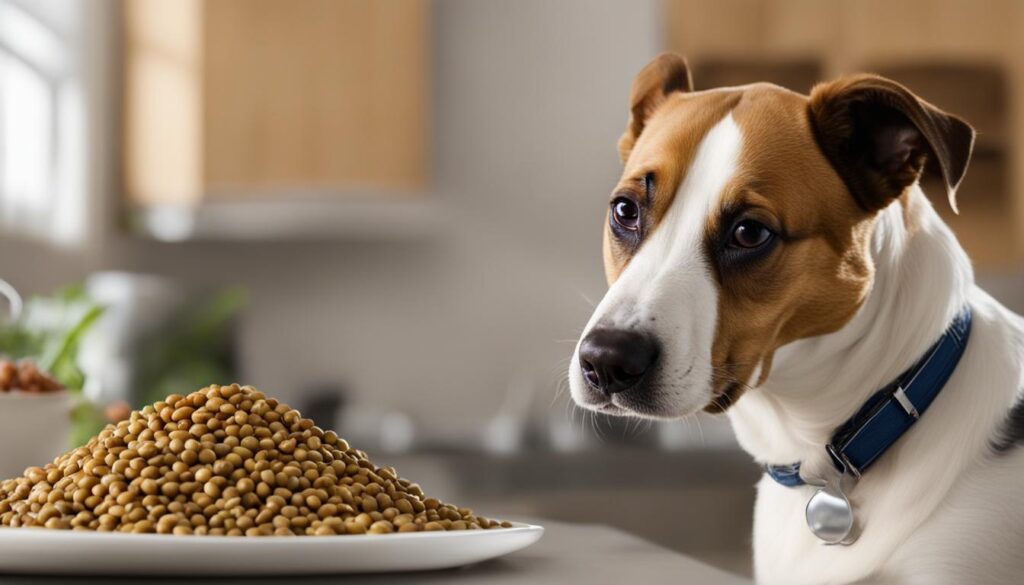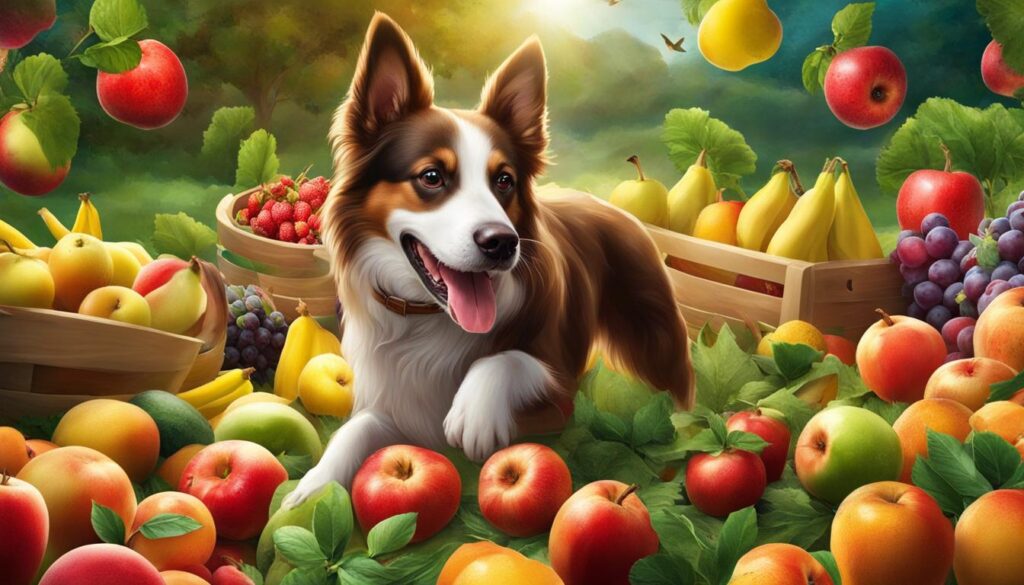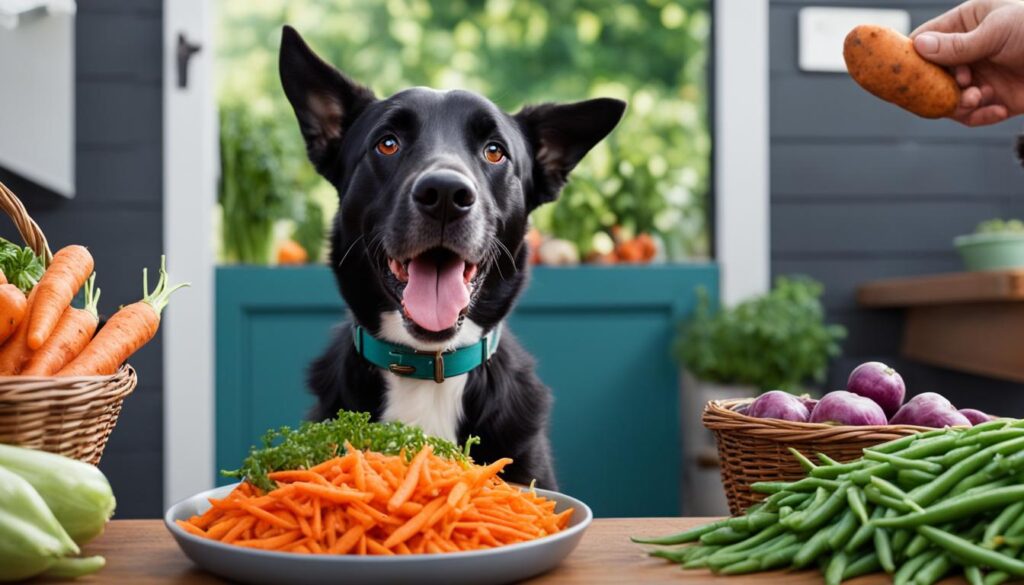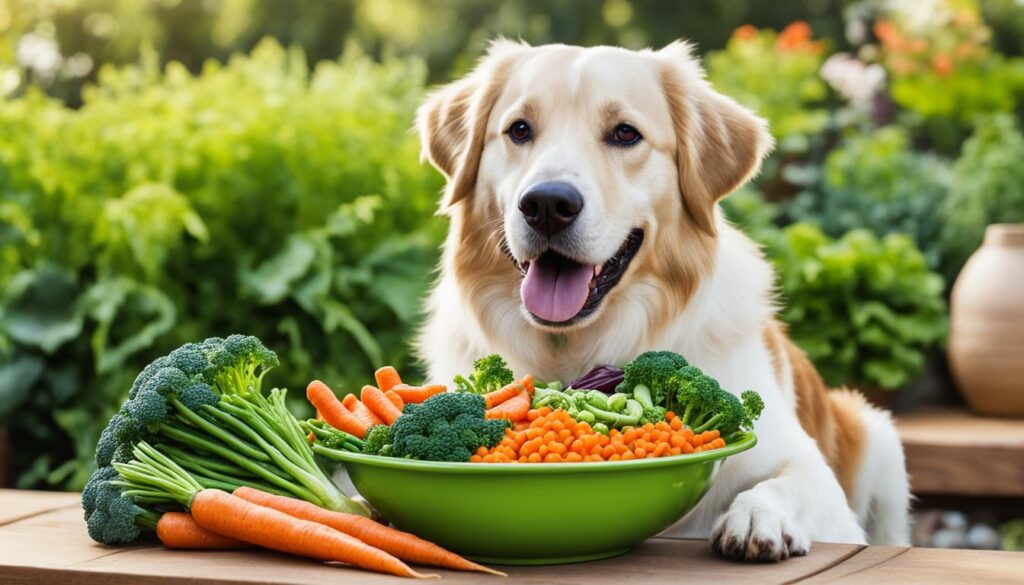As a responsible pet owner, you want to ensure that your furry companion is getting the best nutrition possible. When it comes to feeding your dog, it’s important to understand which foods are safe and beneficial for their well-being. One question that often arises is whether dogs can eat black-eyed peas. Let’s delve into this topic and provide you with expert insights on the matter.
Black-eyed peas, a type of legume, are safe for dogs to consume in moderation as part of a balanced diet. However, there are a few important considerations to keep in mind. It’s crucial to avoid seasoning or adding harmful ingredients to black-eyed peas before feeding them to your dog. Consulting with a veterinarian before introducing new foods into your dog’s diet is always recommended.
Feeding black-eyed peas to your dog can provide nutritional benefits. They are a good source of fiber, protein, and antioxidants, which can support your dog’s immune system and promote digestion. However, it’s essential to properly prepare black-eyed peas and remove any seasoning or harmful ingredients.
Key Takeaways:
- Black-eyed peas can be safely consumed by dogs in moderation as part of a balanced diet.
- Consult with a veterinarian before introducing new foods into your dog’s diet.
- Properly prepare black-eyed peas and remove any seasoning or harmful ingredients.
- Black-eyed peas are a good source of fiber, protein, and antioxidants for dogs.
- Feeding black-eyed peas to your dog can support their immune system and promote digestion.
Incorporating Fruits and Vegetables into Your Dog’s Diet

Adding fruits and vegetables to your dog’s diet can provide essential nutrients and contribute to their overall health. It’s important to ensure a balanced and nutritious diet for your furry friend. When it comes to adding fruits and vegetables to your dog’s meals, there are several considerations to keep in mind to promote their well-being.
Benefits of Fruits for Dogs
Fruits are a natural source of vitamins, minerals, and antioxidants, which can support your dog’s immune system and enhance their overall health. Some fruit options that are safe for dogs include:
| Fruits for Dogs | Benefits |
|---|---|
| Apples | Rich in fiber and vitamin C |
| Bananas | Provide potassium and vitamin B6 |
| Blueberries | Packed with antioxidants |
Remember to remove any seeds, pits, or inedible parts before feeding fruits to your dog. Always start with small amounts and monitor your dog’s reaction when introducing new fruits into their diet. If you notice any adverse reactions, consult with a veterinarian.
Benefits of Vegetables for Dogs
Vegetables are a great addition to your dog’s diet as they provide important vitamins, minerals, and fiber. Some safe vegetables for dogs include:
- Carrots: High in beta-carotene and fiber
- Green beans: A source of vitamins and minerals
- Spinach: Contains antioxidants and iron
When feeding vegetables to your dog, ensure they are properly cooked or prepared to aid digestion. Small, bite-sized pieces are ideal for easy consumption.
Consulting with Your Veterinarian
Before making any significant changes to your dog’s diet, it is essential to consult with a veterinarian. They can provide personalized recommendations based on your dog’s specific needs and health conditions. A veterinarian can guide you on the appropriate portion sizes, frequency of feeding fruits and vegetables, and any precautions to take. They will ensure that your dog’s diet remains balanced and suits their nutritional requirements.
By incorporating fruits and vegetables into your dog’s diet with guidance from a veterinarian, you can support their overall health and well-being. Remember to always prioritize your pet’s safety and seek professional advice for a diet that best suits their individual needs.
Safe Fruits for Dogs to Eat

When it comes to feeding your dog fruits, there are several options that are safe and nutritious for them. Incorporating these fruits into your dog’s diet can provide them with important vitamins and minerals to support their overall health. Some safe fruits for dogs include:
- Apples
- Bananas
- Blueberries
- Cantaloupe
- Cranberries
- Mangoes
- Oranges
- Pears
- Pineapples
- Raspberries
- Strawberries
- Watermelon
However, it is important to remove any seeds, pits, or skins that could pose a choking hazard or contain harmful toxins. Always start with small amounts and monitor your dog’s reaction when introducing new fruits into their diet.
| Fruit | Benefits |
|---|---|
| Apples | High in fiber and vitamin C |
| Bananas | Rich in potassium and vitamins |
| Blueberries | Packed with antioxidants and vitamins |
| Cantaloupe | Hydrating and a good source of vitamins A and C |
| Cranberries | Contain antioxidants and support urinary health |
| Mangoes | High in vitamin C and fiber |
| Oranges | Provide vitamin C and other essential nutrients |
| Pears | Rich in fiber and vitamins |
| Pineapples | Contain bromelain, which aids digestion |
| Raspberries | Loaded with antioxidants and fiber |
| Strawberries | High in vitamins and antioxidants |
| Watermelon | Refreshingly hydrating and low in calories |
Benefits of Adding Safe Fruits to Your Dog’s Diet

Incorporating safe fruits into your dog’s diet can provide a range of benefits that contribute to their overall health and well-being. Fruits are packed with essential vitamins, minerals, and antioxidants that are beneficial for your dog’s immune system.
Here are some key advantages of adding fruits to your dog’s diet:
- Vitamins and Minerals: Fruits are a natural source of vitamins A, C, and E, which are crucial for your dog’s healthy vision, immune function, and skin health. They also contain minerals like potassium, calcium, and manganese that support various bodily functions.
- Nutrients: Fruits provide your dog with essential nutrients such as dietary fiber, which aids in digestion and promotes regular bowel movements. Additionally, they offer carbohydrates that provide energy to keep your dog active and fueled during the day.
- Antioxidants: Many fruits are rich in antioxidants that help protect your dog’s body from harmful free radicals, reducing the risk of chronic diseases and supporting their overall well-being.
By introducing a variety of safe and dog-friendly fruits into their diet, you can enhance their meals with added flavor and enjoyment. However, it’s important to remember that fruits should be given in moderation and should not replace a balanced diet specifically formulated for your dog’s nutritional needs.
Consulting with a veterinarian is always recommended when making dietary changes for your dog. They can provide guidance on appropriate portion sizes, frequency of fruit intake, and any considerations based on your dog’s individual needs and health conditions.
Remember, a balanced diet that includes high-quality dog food as the main source of nutrition is essential for your dog’s overall health. Fruits should be seen as a supplement or snack, providing additional nutrients and variety to their diet.
Safe Vegetables for Dogs to Eat

When it comes to providing a balanced and nutritious diet for our dogs, incorporating vegetables can offer numerous benefits. It’s important to ensure that the vegetables we choose are safe and provide the necessary nutrients for optimal canine health.
Some safe vegetables for dogs include:
- Asparagus
- Bell peppers
- Broccoli
- Carrots
- Green beans
- Peas
- Pumpkin
- Spinach
- Sweet potatoes
- Zucchini
However, it is important to remove any seeds, pits, or inedible parts before feeding them to your dog. Always start with small amounts and monitor your dog’s reaction when introducing new vegetables into their diet.
Adding these vegetables to your dog’s diet can provide important vitamins, minerals, and fiber that contribute to their overall health and well-being. Vegetables such as black eyed peas can be a valuable source of nutrients like fiber, protein, vitamins, and minerals.
Remember to consult with a veterinarian for guidance on portion sizes and frequency of feeding. Their professional advice will ensure that your dog’s specific dietary needs are met.
Benefits of Adding Vegetables to Your Dog’s Diet

Adding vegetables to your dog’s diet can have numerous benefits. Not only do vegetables provide a valuable source of essential nutrients, but they can also support your dog’s immune system, provide vitamins, and offer antioxidants. One vegetable that can be particularly beneficial is black eyed peas. They are rich in fiber, protein, vitamins, and minerals, making them a valuable addition to your dog’s meals.
When it comes to incorporating vegetables into your dog’s diet, it’s important to prepare them properly. Remove any harmful ingredients or seasonings, and cut the vegetables into small, bite-sized pieces that are easy for your dog to chew and digest. If you’re unsure about the appropriate portion size or frequency of feeding, consult with a veterinarian who can provide expert guidance tailored to your dog’s specific needs.
Introducing new foods to your dog’s diet should always be done gradually. Monitor your dog for any adverse reactions, such as gastrointestinal upset or allergies. If you notice any concerning symptoms, seek veterinary advice promptly. Every dog is unique, so it’s essential to observe how your individual furry friend responds to different vegetables and adjust their diet accordingly.
By adding vegetables like black eyed peas to your dog’s meals, you can provide them with a well-rounded diet that supports their overall well-being. Remember to prioritize their health and consult with a veterinarian to ensure their dietary needs are met.
Note: The image above showcases the benefits of vegetables for dogs, including the vitamins, minerals, and antioxidants they contain.
Understanding the Connection Between Diet and Canine DCM
Canine Dilated Cardiomyopathy (DCM) is a serious heart condition that can affect dogs. While the specific causes of DCM are not fully understood, ongoing research aims to shed light on the potential relationship between diet and this condition. It is important to note that there are multiple factors at play, including genetics and individual predisposition.
The FDA has issued a warning regarding a potential link between certain ingredients, such as pulses like peas and lentils, and the development of DCM in dogs. However, it is crucial to recognize that not all grain-free diets are implicated, and further research is needed to fully comprehend the connection between diet and DCM.
If you suspect that your dog may be at risk for DCM or observe symptoms such as decreased energy, coughing, difficulty breathing, or episodes of collapse, it is vital to consult a veterinarian for a comprehensive evaluation and appropriate guidance.
University of Guelph Research on Safety of Pulse Ingredients in Dog Food

A comprehensive feeding study conducted by the University of Guelph explored the safety of pulse ingredients, such as lentils and beans, commonly used in grain-free dog foods. The study aimed to examine any potential effects of pulse ingredients on cardiac function and overall heart health in dogs.
The research findings provided valuable insights into the safe levels of pulse ingredients that can be included in dog food without compromising health. Dogs that were fed diets containing up to 45% whole pulse ingredients and no grains for a period of 20 weeks showed no indications of heart issues or changes in body composition.
These results offered reassurance about the safety of incorporating pulse ingredients into grain-free dog foods. However, it is essential to note that the study emphasized the importance of understanding the nutrient composition of each ingredient. It is crucial to ensure that dog foods exceed the minimum nutrient requirements to support overall health and well-being.
| Research Highlights | Implications |
|---|---|
| The University of Guelph conducted a comprehensive feeding study on pulse ingredients in dog food. | The study revealed that incorporating pulse ingredients into grain-free dog foods is safe within certain levels. |
| Dogs fed diets containing up to 45% whole pulse ingredients showed no indications of heart issues or changes in body composition. | This provides reassurance for pet owners concerned about the safety of pulse ingredients. |
| Understanding the nutrient composition of each ingredient is crucial. | Dog foods should exceed the minimum nutrient requirements to ensure overall health and well-being. |
While the University of Guelph research offers valuable insights, it is always recommended to consult with a veterinarian when determining the best diet for your dog. Evidence-based diet recommendations from a veterinary professional can ensure that your dog’s specific nutritional needs are met.
Adding Fruits and Vegetables to Your Pet’s Diet: Tips and Recommendations
When it comes to adding fruits and vegetables to your pet’s diet, it’s important to take certain precautions and follow recommended guidelines. Here are some helpful tips to help you incorporate these nutritious foods into your pet’s meals:
Gradual Introduction of New Foods
Introduce new fruits and vegetables gradually into your pet’s diet. Start by offering small amounts and observe their reaction. This allows their digestive system to adjust and helps identify any potential allergies or sensitivities.
Monitoring Your Pet’s Reaction
Keep a close eye on your pet’s reaction to new foods. Watch for any signs of digestive upset, such as vomiting or diarrhea, as well as changes in their energy levels or behavior. If you notice any adverse reactions, discontinue the food and consult with a veterinarian.
Signs of Food Allergies in Pets
Pets can develop allergies to certain fruits and vegetables, just like humans. Look out for symptoms like itching, rashes, excessive licking, or gastrointestinal issues. If you suspect your pet has a food allergy, consult with a veterinarian for proper diagnosis and guidance.
Veterinary Guidance for Pet’s Diet
Consulting with a veterinarian is crucial when making any dietary changes for your pet. They can provide personalized recommendations based on your pet’s specific needs, including portion sizes, frequency of feeding, and suitable fruits and vegetables for their species or breed.
Safety Precautions for Feeding Fruits and Vegetables to Pets
Ensure the safety of your pet by following these precautions:
- Remove any seeds, pits, skins, or inedible parts before feeding fruits and vegetables.
- Avoid feeding toxic foods, such as grapes, raisins, onions, garlic, and avocados.
- Choose organic fruits and vegetables whenever possible to reduce exposure to pesticides.
- Wash fruits and vegetables thoroughly to remove any residue or harmful substances.
Remember, while fruits and vegetables can be beneficial for your pet’s health, they should not replace a complete and balanced pet food diet. Always prioritize their well-being and seek professional veterinary advice for their specific dietary needs.
Wrapping Up
In conclusion, incorporating black eyed peas, as well as other safe fruits and vegetables, into your dog’s diet can provide a range of essential nutrients and contribute to their overall health and well-being. When properly prepared and introduced in moderation, black eyed peas can be a safe and nutritious addition to their meals. By consulting with a veterinarian and following their guidance, you can ensure that your dog’s dietary needs are met and that any potential risks or allergies are considered.
Adding fruits and vegetables to your dog’s diet can offer a variety of benefits, including supporting their immune system, aiding digestion, and providing important vitamins and minerals. However, it is crucial to remember that moderation is key and that fruits and vegetables should complement a balanced diet that includes high-quality dog food specifically formulated for their nutritional needs.
When introducing new foods, it is important to monitor your dog for any adverse reactions and seek veterinary advice if needed. By prioritizing your dog’s health and well-being, you can provide them with a well-rounded and nutritious diet that promotes their overall wellness.
FAQ
Are Black Eyed Peas Safe for Dogs?
Yes, black eyed peas can be safely consumed by dogs in moderation as part of a balanced diet. It is important to avoid seasoning or adding harmful ingredients to black eyed peas before feeding them to dogs.
Can Dogs Eat Black Eyed Peas?
Yes, dogs can eat black eyed peas. They are a good source of fiber, protein, and antioxidants, which can support your dog’s immune system and promote digestion. However, it is essential to feed them in moderation and consult with a veterinarian before introducing new foods into their diet.
What Are the Nutritional Benefits of Black Eyed Peas for Canines?
Black eyed peas provide essential nutrients such as fiber, protein, and antioxidants, which can contribute to your dog’s overall health. They support the immune system and promote digestion.
How Should I Prepare Black Eyed Peas for My Dog?
When feeding black eyed peas to your dog, it is important to properly prepare them and remove any seasoning or harmful ingredients. Consulting with a veterinarian before introducing new foods into your dog’s diet is recommended.
What Precautions Should I Take When Giving Black Eyed Peas to Dogs?
To ensure your dog’s safety, feed black eyed peas in moderation and avoid seasoning or adding harmful ingredients. It is crucial to consult with a veterinarian before introducing new foods into your dog’s diet.
What Other Legumes Are Safe for Dogs Besides Black Eyed Peas?
Other dog-friendly legumes include chickpeas, lentils, and green beans. These legumes can be safely consumed by dogs and provide additional nutritional benefits.
What Are the Health Risks of Feeding Black Eyed Peas to Dogs?
Feeding black eyed peas to dogs is generally safe. However, it is important to feed them in moderation and consult with a veterinarian to ensure your dog’s specific needs are met. Some dogs may have difficulty digesting legumes, so it is essential to monitor their digestive system for any adverse reactions.
Can I Add Black Eyed Peas to My Dog’s Regular Diet?
Yes, you can add black eyed peas to your dog’s regular diet as long as it is done in moderation and in consultation with a veterinarian. Black eyed peas should be considered a snack or supplement, not a primary meal.
What Are the Alternative Legumes for Dogs Besides Black Eyed Peas?
Chickpeas, lentils, and green beans are alternative legumes that are safe for dogs to eat. These legumes can provide similar nutritional benefits to black eyed peas.
How Do Black Eyed Peas Affect Dogs’ Digestive System?
Black eyed peas can contribute to a healthier digestive system in dogs due to their high fiber content. However, excessive consumption may cause digestive upset, so it is important to feed them in moderation.






